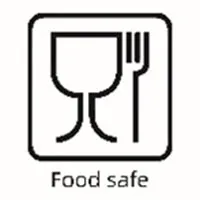 TEL: +86 311 67799298
TEL: +86 311 67799298 Email: tina@yintoglassware.com
Email: tina@yintoglassware.com
How to Bake Perfectly in a Glass Dish Every Time
The Art of Baking in Glass Dishes
Baking has long been a cherished tradition in kitchens around the world, with each culture adding its unique spin to this age-old practice. One of the most versatile and practical tools in any baker's arsenal is the glass dish. Whether for savory casseroles or sweet desserts, the glass baking dish is an essential item that can elevate both the cooking process and the final presentation of your dish.
Understanding Glass Baking Dishes
Glass baking dishes come in various sizes and shapes, making them suitable for a myriad of recipes. These dishes are typically made from tempered glass, which allows them to withstand high temperatures in the oven without warping or breaking. This durability ensures that your food cooks evenly, while also providing a beautiful, transparent container that showcases your culinary creations.
One of the standout features of glass baking dishes is their ability to retain heat. This characteristic not only helps in achieving that perfect bake but also ensures that your meal stays warm long after it comes out of the oven. The non-reactive nature of glass means that it won’t leach any chemicals or alter the flavor of your food, making it a safer option when cooking with acidic ingredients.
Advantages of Baking in Glass
1. Versatility Glass dishes can be used for a variety of recipes including lasagna, brownies, casseroles, and even bread. Some dishes are oven, microwave, and dishwasher safe, adding to their convenience.
2. Visual Appeal The transparency of glass allows you to monitor the cooking process without disturbing the dish. This feature not only helps in achieving perfect browning but also makes the glass dish perfect for serving straight from the oven to the table.
3. Even Cooking Glass distributes heat evenly, ensuring that food cooks uniformly. This property is particularly beneficial when baking items that require even heat distribution, such as cakes and quiches.
4. Easy Cleanup Most glass baking dishes are easy to clean, often requiring just a gentle scrub with soap and water. Additionally, many are dishwasher safe, making post-baking cleanup a breeze.
baking glass dish

Tips for Baking with Glass Dishes
While glass baking dishes are incredibly user-friendly, there are some essential tips to keep in mind for optimal results
1. Preheat the Oven Always preheat your oven before placing your glass dish inside. This helps in achieving even cooking and prevents thermal shock, which could crack the dish.
2. Adjust Baking Times Glass dishes often require about 10-15 minutes less baking time compared to metal pans. Keep an eye on your recipes to avoid overcooking.
3. Avoid Sudden Temperature Changes Glass can break if exposed to sudden temperature changes. Avoid putting a cold glass dish directly from the refrigerator into a hot oven.
4. Grease the Dish Even though glass is non-stick, it’s advisable to grease or line your dish to prevent sticking, especially for sticky recipes like caramel or certain cakes.
5. Use Appropriate Utensils Metal utensils can scratch glass, so it’s best to use silicone or wooden utensils when serving or mixing in the dish.
Conclusion
Baking in glass dishes is not only practical but also enhances the overall baking experience. With their versatility, ease of use, and aesthetic appeal, glass baking dishes have earned a permanent spot in both amateur and professional kitchens. Whether you’re experimenting with a new recipe or sticking to time-tested favorites, glass baking dishes will undoubtedly serve as your trusted partner in creating delicious meals that are bound to impress. So, dust off that glass dish and let the baking adventures begin!
-
Benefits of Vacuum Containers with Pumps for Food PreservationNewsJun.12,2025
-
Glass Food Storage Container with Lid for Seal PreservationNewsJun.12,2025
-
Styling Amber Glass Plates for Modern TablescapesNewsJun.12,2025
-
Benefits of Double Wall Coffee Cups for Heat RetentionNewsJun.12,2025
-
Colored Glass Bowls in Cultural TraditionsNewsJun.12,2025
-
Durability of Colored Glass Dinnerware Compared to CeramicNewsJun.12,2025









